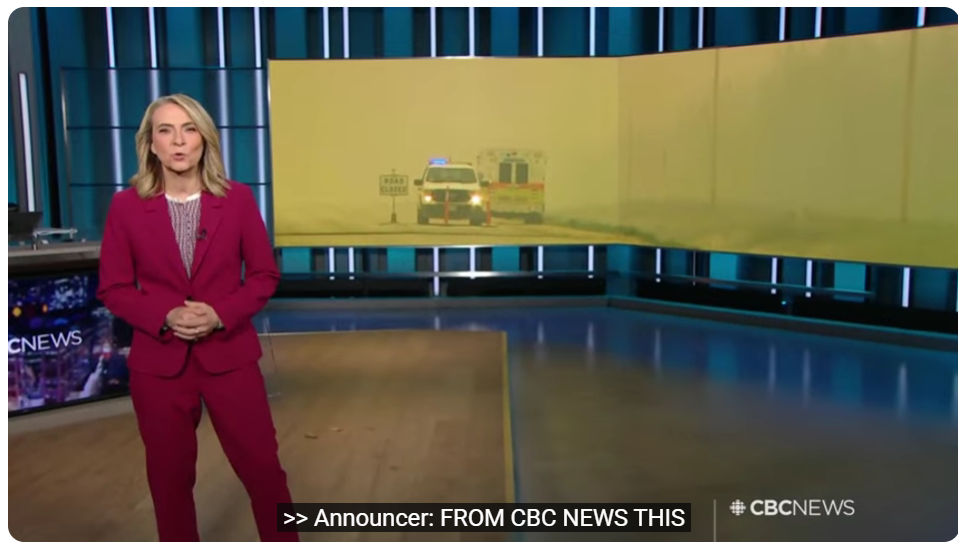DUN-DUN…DUN-DUN…DUNDUNDUNDUNDUNDUNDUNDUN
Terrified yet?
Music, sound effects, and other audio elements are an integral part of movies like the 1975 American cult classic Jaws, instantly evoking a particular atmosphere. The same is true for a wide variety of content ranging from corporate videos to video games.
So how do media companies, and anyone else who creates video content, make sure people who are d/Deaf or hard of hearing can enjoy the same spine-tingling experience? And what about other people who watch video content with the sound off?
Fortunately, there’s a solution: subtitles and captions! In this article, we’ll focus on Subtitles for the Deaf and Hard of Hearing (SDH) and Closed Captions (CC), two of the most common methods for ensuring deaf and hard of hearing viewers can access and understand video content. These accessibility and inclusion solutions also improve the user experience for people without hearing impairments like multilingual audiences and people in noisy or quiet environments who want to watch without sound.
What Are Captions and Subtitles?
In North America, the word “subtitle” generally describes on-screen text for hearing viewers who do not speak the language of the original content. They only convey translated dialogue and do not include other audio information. Everything is precisely synced to the audio so it matches what’s happening on screen.
In the UK and other countries, subtitles include captions, all types of subtitles, and any other timed text added to video content.
Non-SDH subtitles are used for translation so video content is accessible in multiple languages, opening up your videos to audiences around the world. It’s important to localize subtitles rather than simply translate them to preserve tone, intent, and clarity so the video’s impact remains the same in other languages.
SDH go beyond standard subtitles. They include dialogue, narration, speaker labels, and descriptions of all other significant audio content like music and sound effects.
Captions are also time-coded text transcriptions of audio content, but they are specifically designed for d/Deaf and hard of hearing audiences, transcribing and describing all meaningful audio content in the same language as the audio. This allows viewers to understand who is speaking and what else is happening in a scene’s soundscape.
Captions can be open or closed. They’re “open” when embedded directly into a video and always visible. “Closed” means they can be toggled on or off by the user. This is often the best option for accessibility as it allows the viewer to control their experience.
Similarly, subtitles can be “burned in” to the video so they always appear when it plays or added as a separate file so the viewer can turn them on or off.

What’s the Difference Between SDH and CC?
In short, the choice between CC and SDH depends on your target audience and where your content will be distributed. These considerations determine what file format is used to deliver the captions or subtitles and any applicable accessibility regulations that must be followed.
EIA-608 CC are encoded in line 21 of the vertical blanking interval in the standard definition analog NTSC TV video signal, while EIA-708 CC are transmitted via MPEG-2 video streams in standard and high-definition digital video for TV. Most TVs are equipped with decoders to display the captions. They are intended to make broadcast video content fully accessible for people who are d/Deaf and hard of hearing.
For video on streaming platforms and other Over-the-Top media services, SDH are added to MP4, WEBM, MOV, and other digital file formats using SubRip Text (SRT), Web Video Text Tracks (VTT) or other text file types. They are intended to make online video content fully accessible for people who are d/Deaf and hard of hearing, as well as facilitate comprehension for multilingual audiences and hearing people watching videos with the sound off.
Why Do We Need SDH Subtitles and Closed Captions?
Understanding the difference between SDH and CC is just one part of creating accessible content. Just as important is understanding why these tools matter. More than 430 million people around the world live with disabling hearing loss. For these individuals, audio-based content is inaccessible without text. SDH and CC provide them with the ability to follow the dialogue, understand tone and context, and enjoy video content fully.
There are other benefits as well:
- Better comprehension for viewers watching in a non-native language
- Flexibility in noisy or quiet environments such as airports or libraries
- Improved SEO and content discoverability
- Compliance with national and international accessibility regulations
How Do We Create SDH and CC?
Creating effective SDH subtitles or Closed Captions involves several key steps:
- Transcription – Spoken dialogue, narration, and other meaningful sounds are converted into time-coded written text.
- Speaker Identification – Labels are added to the transcribed text to indicate who is speaking, particularly when the speaker is off-screen or when multiple people talk simultaneously.
- Sound Description – Background noises, music, and sound effect descriptions are also added to the transcription to provide full context.
- Timing and Synchronization – Captions or subtitles are precisely aligned with the corresponding audio.
- Encoding –Subtitle or caption text is embedded in a compatible format within the video stream.
Subtitle and Caption Formatting
The table below outlines industry standards for formatting captions and subtitles, based on FCC guidelines, WCAG accessibility principles, and best practices from major broadcasters and streaming platforms.
| Feature | Standard for Captions | Standard for Subtitles |
| Font Style | Sans-serif (e.g., Arial, Helvetica); Monospaced for live captions | Sans-serif (e.g., Arial, Verdana); Proportional fonts for readability |
| Font Size | Large enough to read at a distance; varies by screen and resolution | Similar size; scalable for mobile and large screens |
| Color | White or yellow text with black outline or shadow for contrast | Usually white text; sometimes user-customizable |
| Background | Transparent or semi-opaque black box, or black outline around text | Typically no background box; relies on contrast and shadow |
| Character Limit | ~32 characters per line; max 2 lines | ~42 characters per line; max 2 lines |
| Timing / Duration | Must sync with speech; minimum 1–2 seconds per line | Timed for comfortable reading; 140–180 words per minute |
| Positioning | Bottom center by default; moves to avoid blocking visuals (faces, text) | Bottom center or user-configurable in streaming players |
| Speaker Identification | >> or speaker name when multiple speakers are present | Optional; used when unclear who is speaking |
International Accessibility Standards
Meeting accessibility standards is a legal requirement in many countries. Here are some key regulations:
- United States: The FCC’s 21st Century Communications and Video Accessibility Act (CVAA) requires Closed Captioning for nearly all TV programming, as well as any captioned content rebroadcast online
- Canada: The Canadian Radio-television and Telecommunications Commission (CRTC) mandates that all major broadcasters and TV channels provide closed captions for 100% of their English- and French-language programming, including live news and prime-time content, as well as any captioned content distributed online.
- Mexico: The Ley Federal de Telecomunicaciones y Radiodifusión requires TV stations to include Closed Captions for a certain percentage of their programming. For example, free stations covering at least 50% of the national population have to caption at least 85% of their programming each year.
- France: ARCOM (Autorité de régulation de la communication audiovisuelle et numérique) requires fully coded and accessible subtitles for both public and private broadcasters.
These regulations ensure that captions are not only present but also accurate, consistent, and easy to follow.
Need Help? ITC Global Can Support Your Accessibility Goals
ITC Global provides expert accessibility solutions. We offer SDH subtitles, Closed Captions, and other multilingual services that align with global standards. Whether your content is for broadcast or streaming in your country or abroad, we are here to help make it fully accessible.
Let’s work together to make your content inclusive. Contact ITC Global today.


